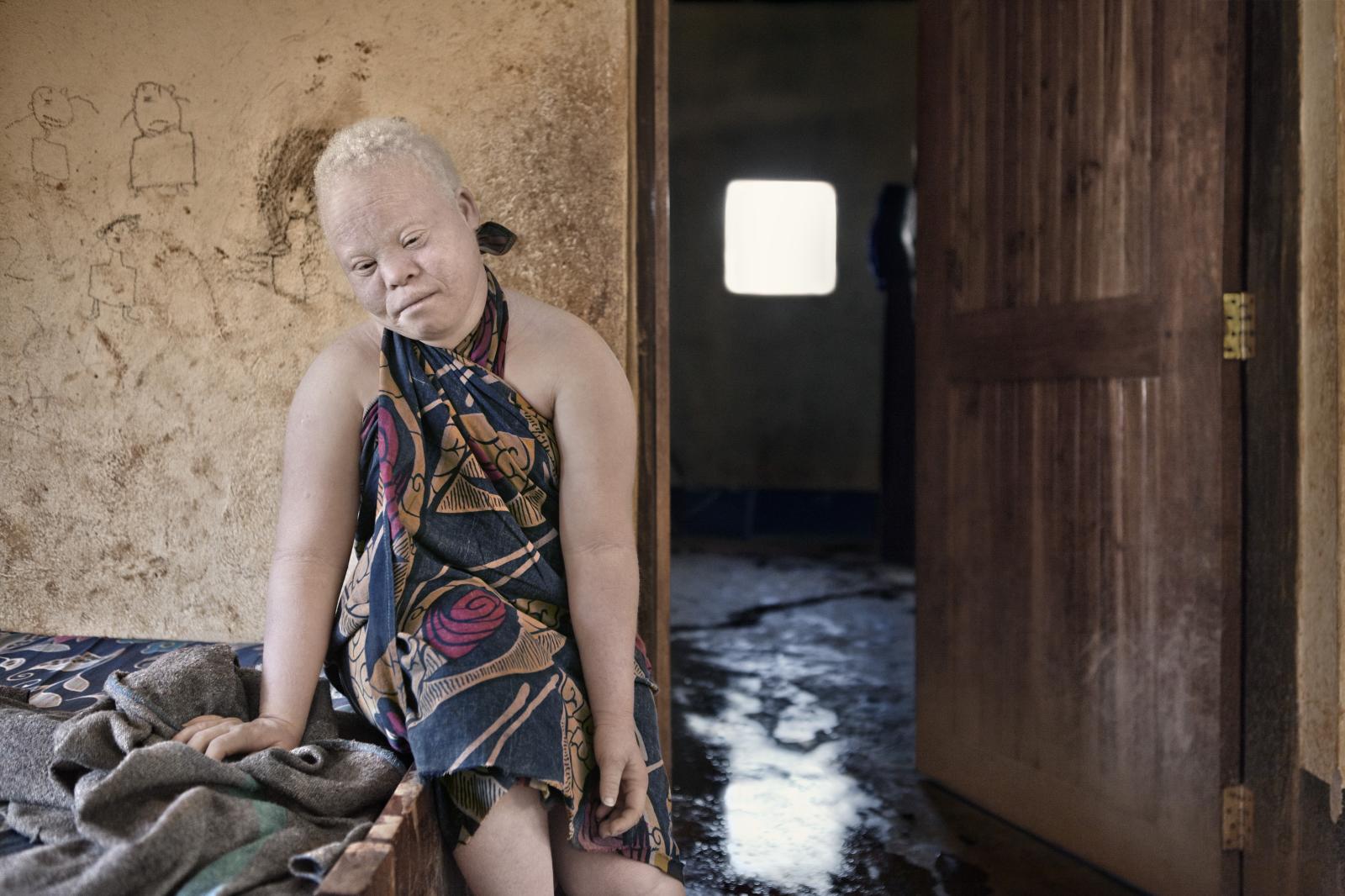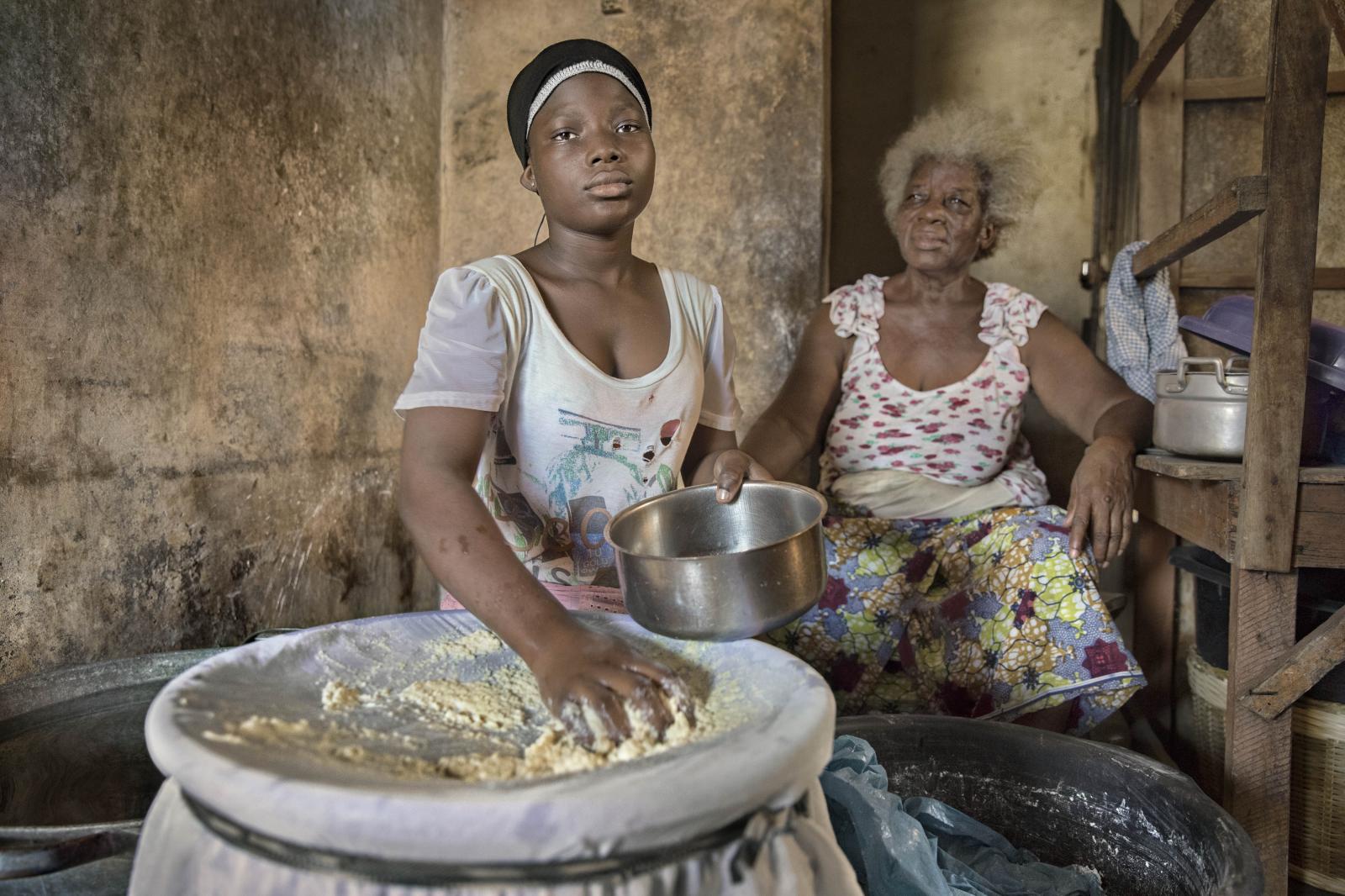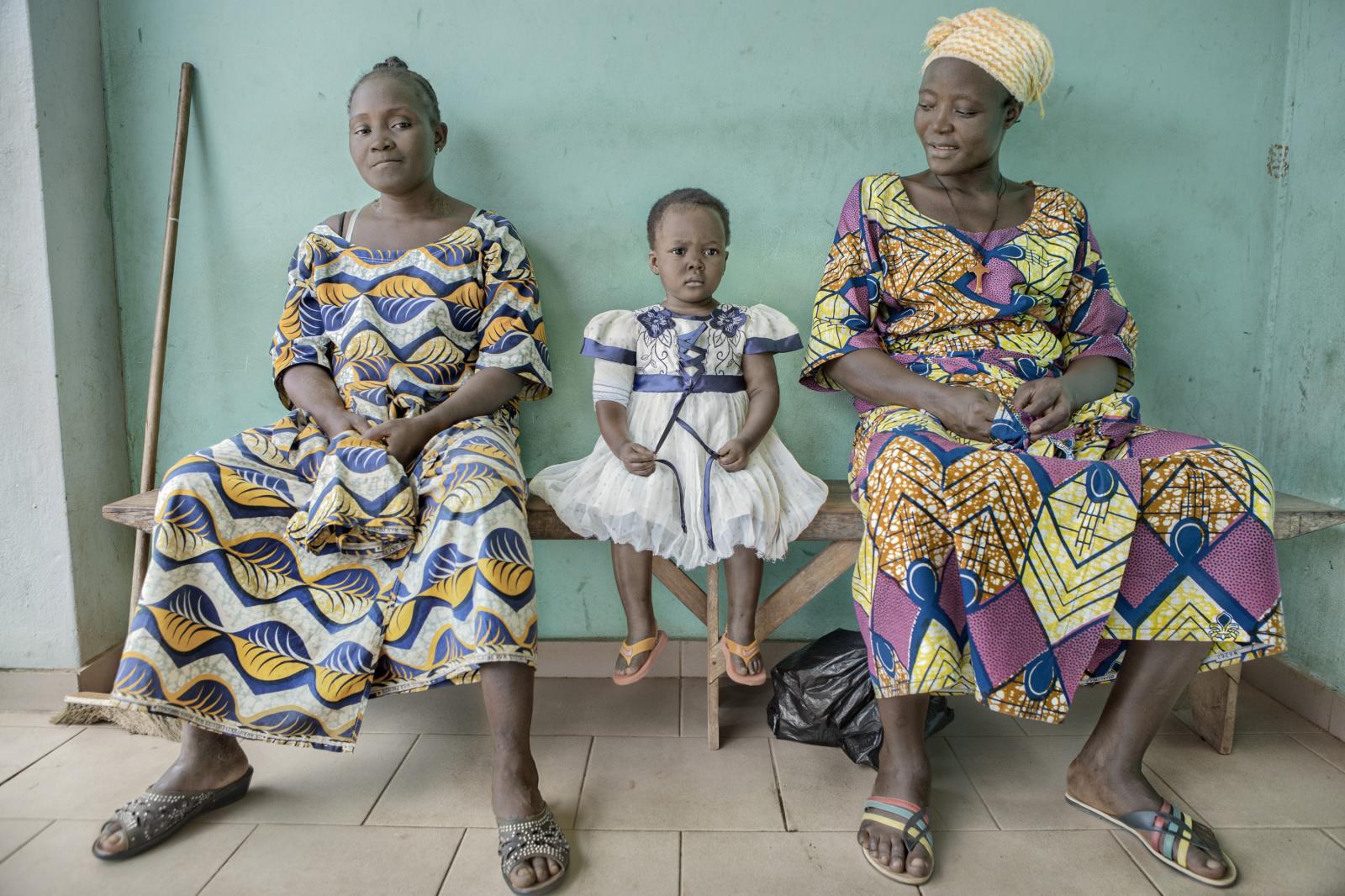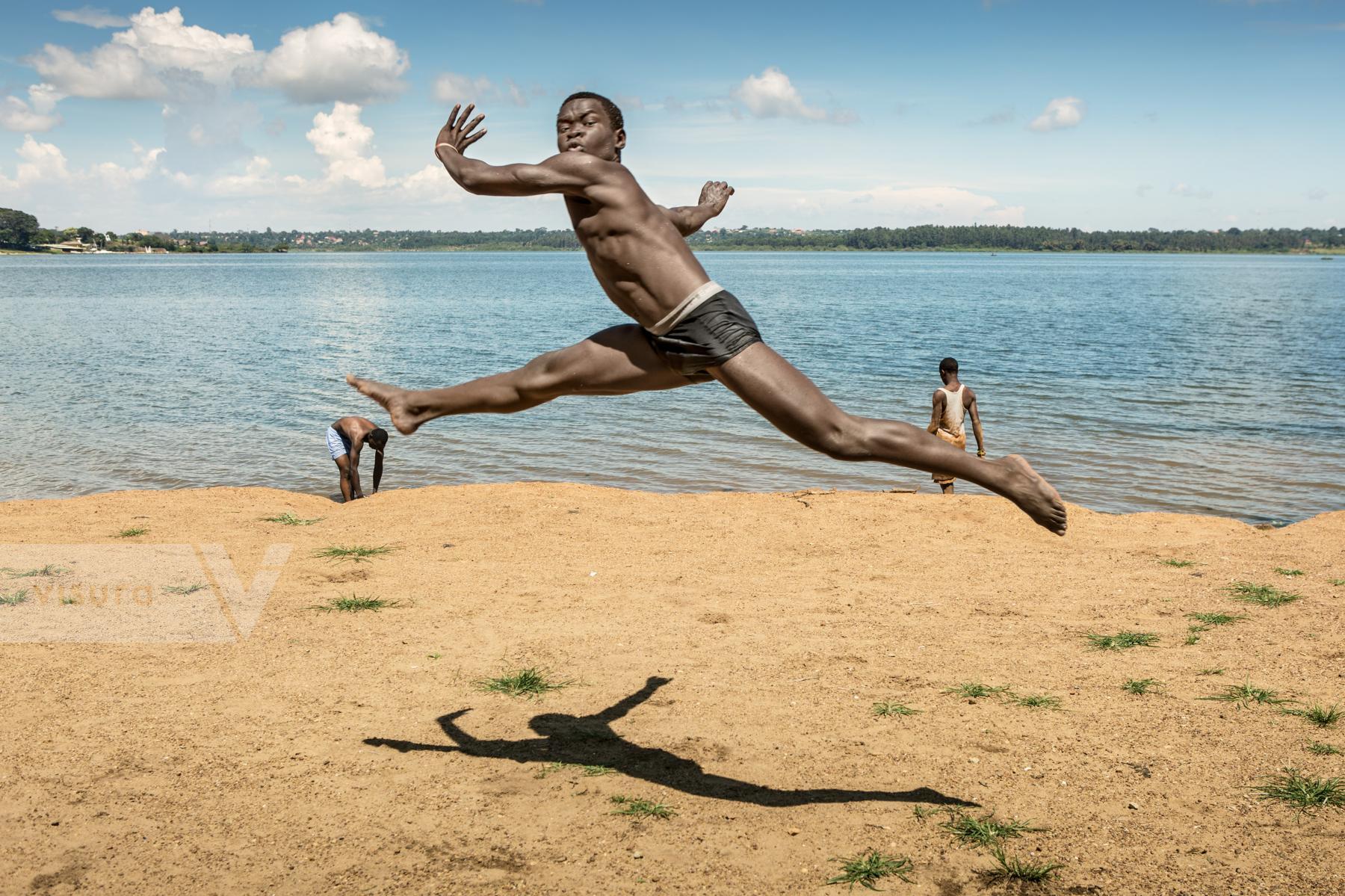
At 15 years old, Hamuza Primo might have been sniffing kerosene, a popular activity in Central Kampala, along with hundreds of other kids in similar circumstances. But he discovered dance. Dance has allowed him to forget his fears and has empowered his spirit. People pay attention to him and he pays attention to himself. Now he speaks out, expresses himself and shares. UGANDA
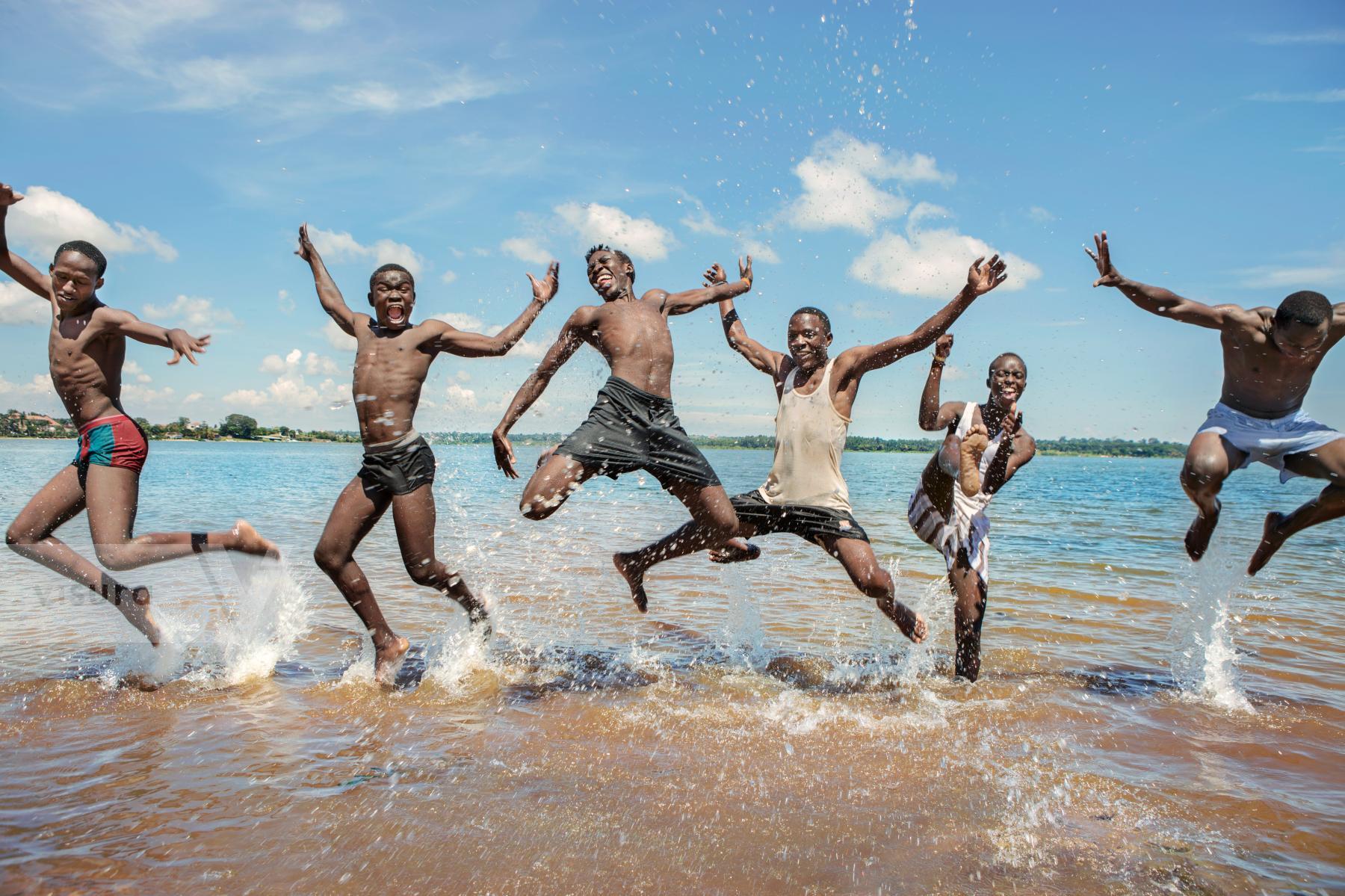
Young people with no financial support leaping at Lake Victoria, Uganda. UGANDA
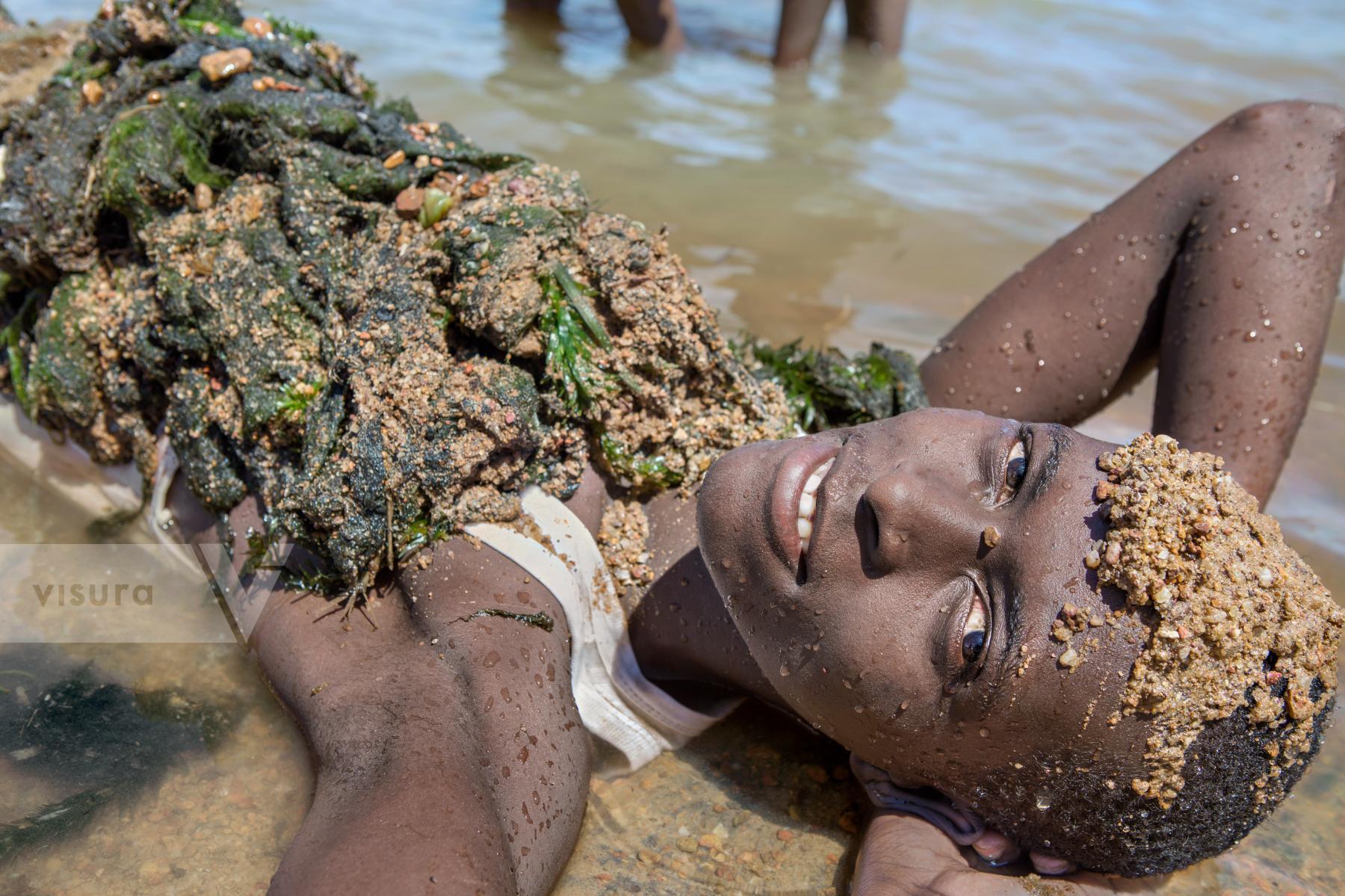
Muyuni Isaac Diaz Oscar. An “In Movement” program student at Lake Victoria, 2014. UGANDA
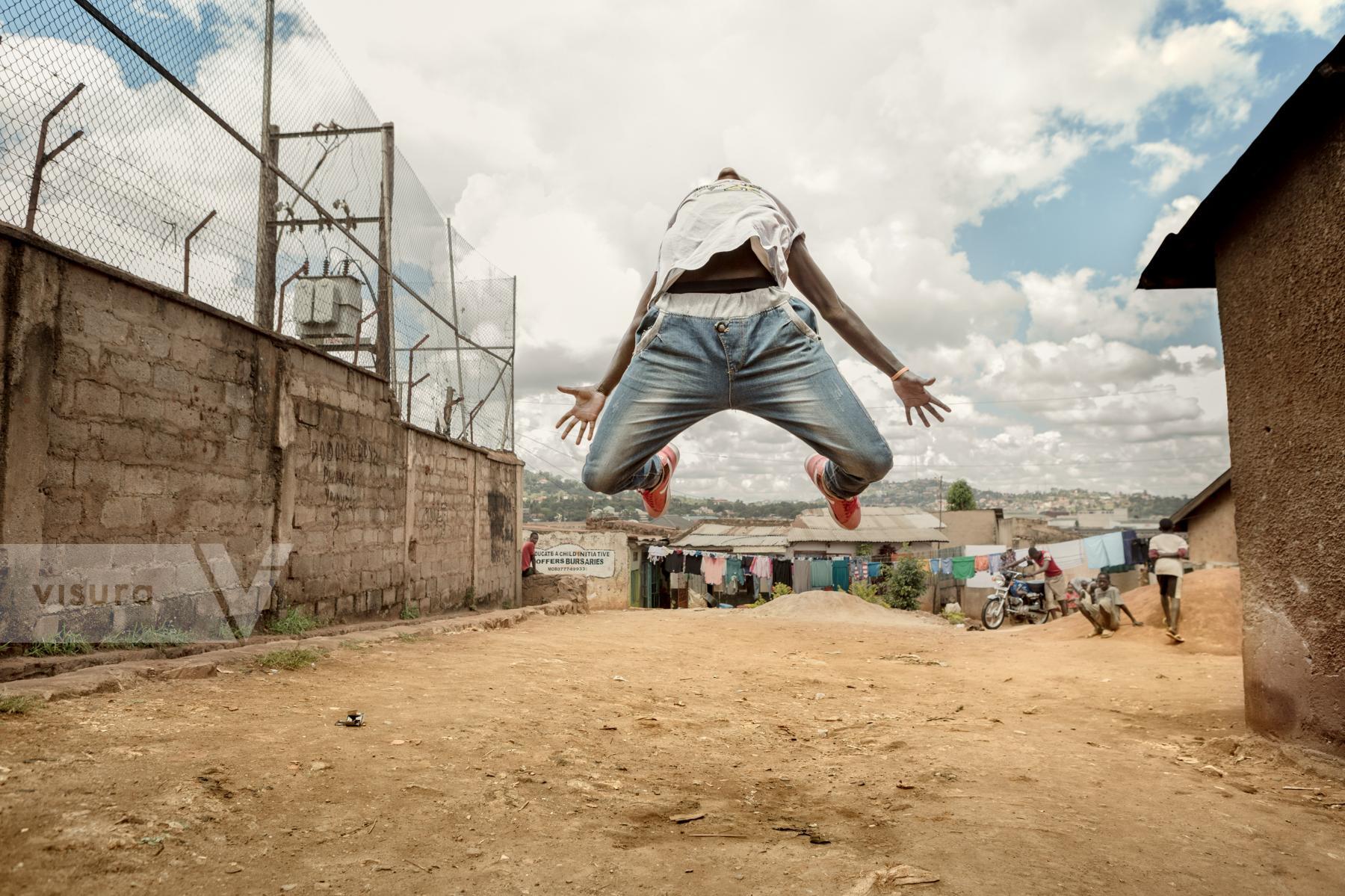
Ivan Musiime, aged 18: “First my mother sold fruit so we could eat, then she sold her body. I escaped from the village because my uncles used to torture me. I arrived in Kampala with nothing and with no-one. I am what I am today because all these artistic activities I’m doing have taught me techniques for having self-confidence, being in charge of my own life and controlling my temper. Now I know how to speak in public and I can even teach other people what I’ve learnt”. Ivan leaps in Kibuli, a ghetto in the Ugandan capital of Kampala. These leaps are his energy, his strategy and his strength. They symbolise transformation, achievement and the desire for a better future. KAMPALA UGANDA
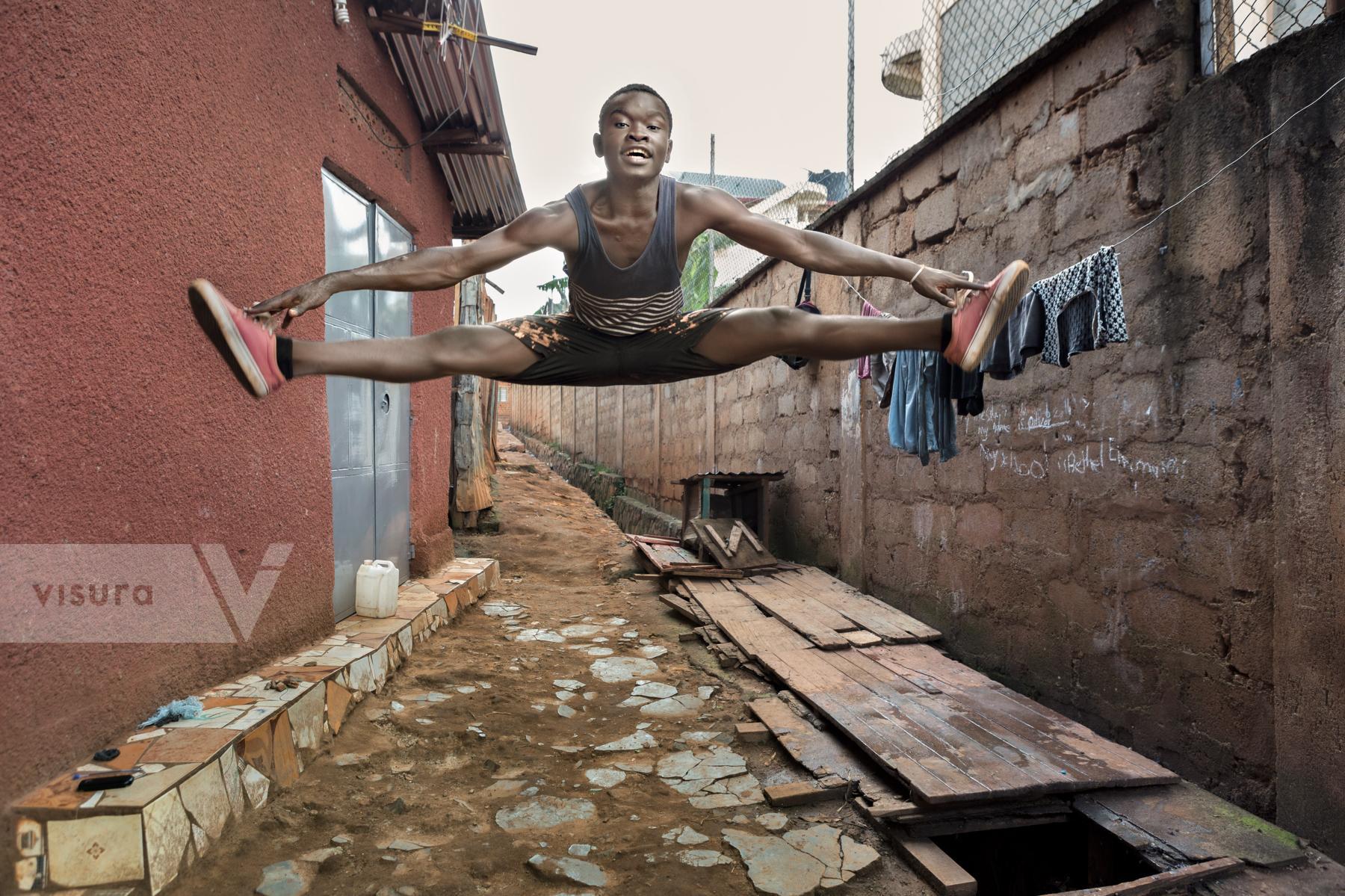
Hamuza’s leap. The stench in Kibuli, the ghetto where Hamuza lives, is unbearable. The sanitary waste water drainage system is poor and rubbish is piled up everywhere, but anywhere is good for practising his passion for dance. KAMPALA UGANDA

Lubega Peter “Sparrow” dreams of filling Uganda’s walls with graffiti art. Founder of Monk 256, a group of young graffiti artists, he has been involved in street art since 2010, trying to make an impact on Ugandan society with this artistic discipline and creating a sense of community with other artists who have similar interests. “I paint walls because it’s fun and also to attract people’s attention to social problems like lack of respect and abuse”. Sparrow, aged 18, lives in the Kibuli ghetto. KAMPALA UGANDA
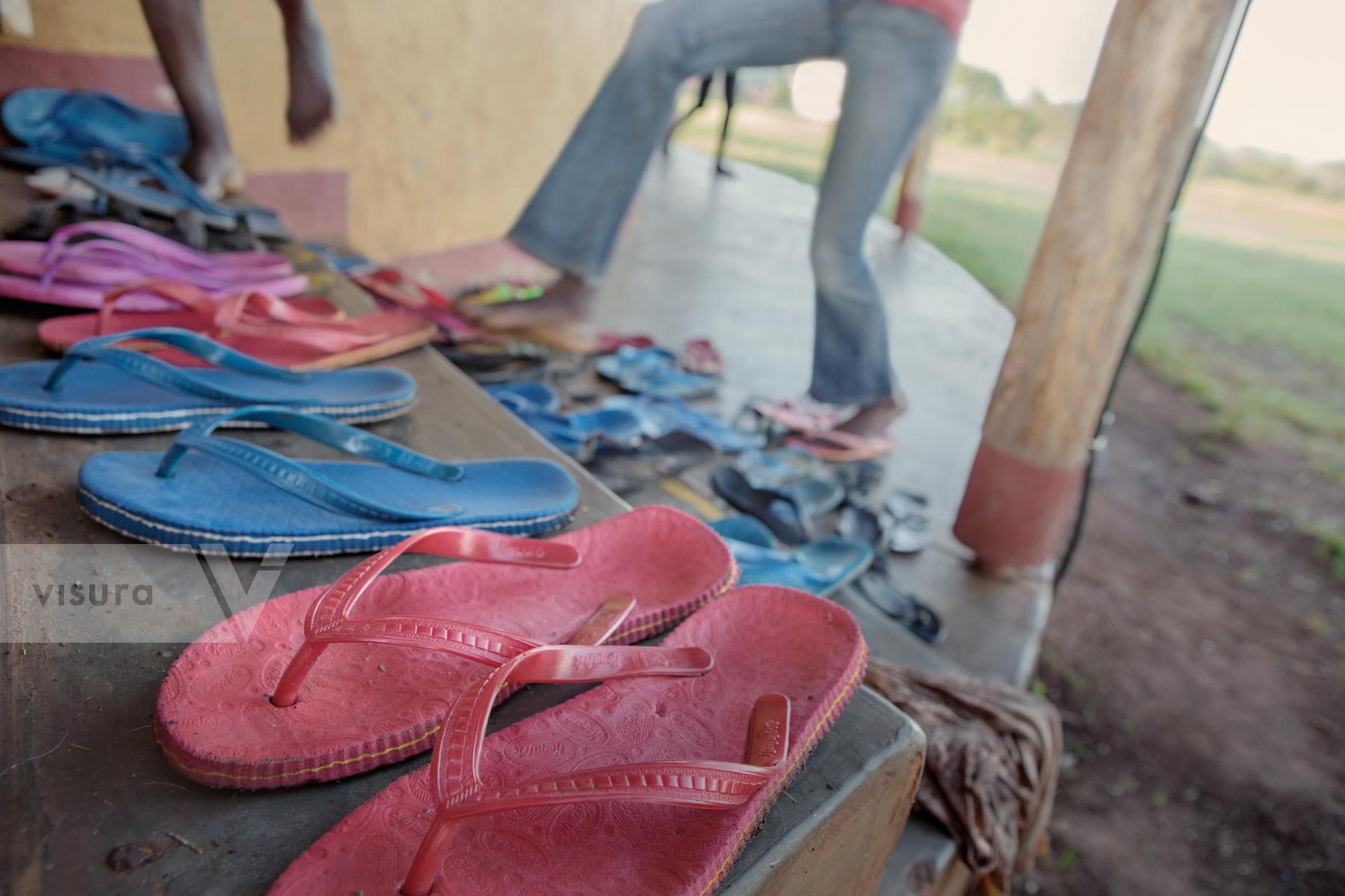
Thousands of vulnerable young people have lived in Hope North and nowadays, football tournaments, theatre productions and educational activities are held in various towns across northern Uganda, the most heavily destroyed area during the civil war. UGANDA
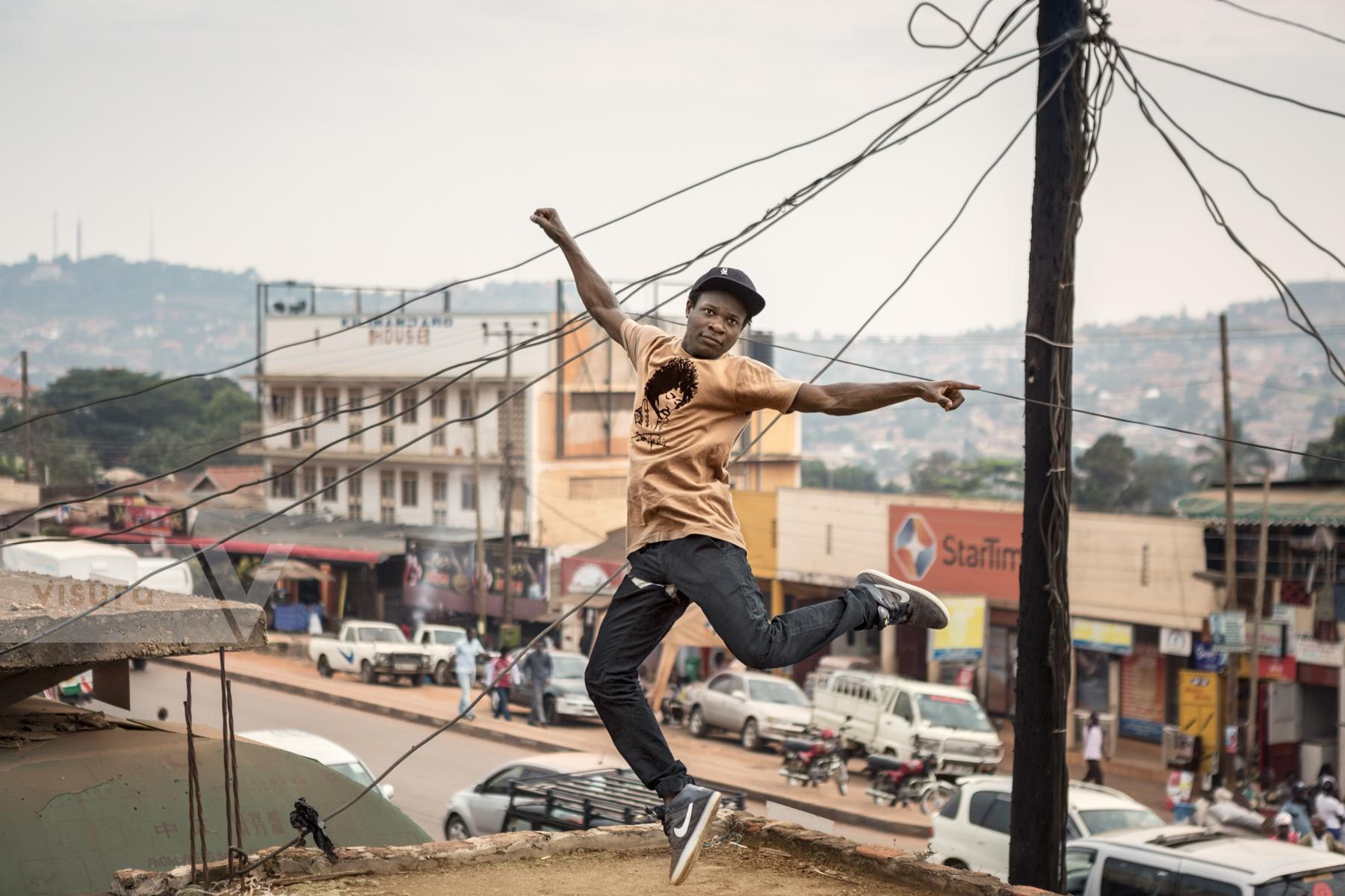
Jeff’s leap. “At aged eight I was completely lost, my father had just died and my mother couldn’t look after her seven children, so I had to leave school to help out at home. I began to dance without knowing it was a therapy for getting away from what I was going through”. Ssemaganda Jeff Kenneth, aged 20. KAMPALA UGANDA
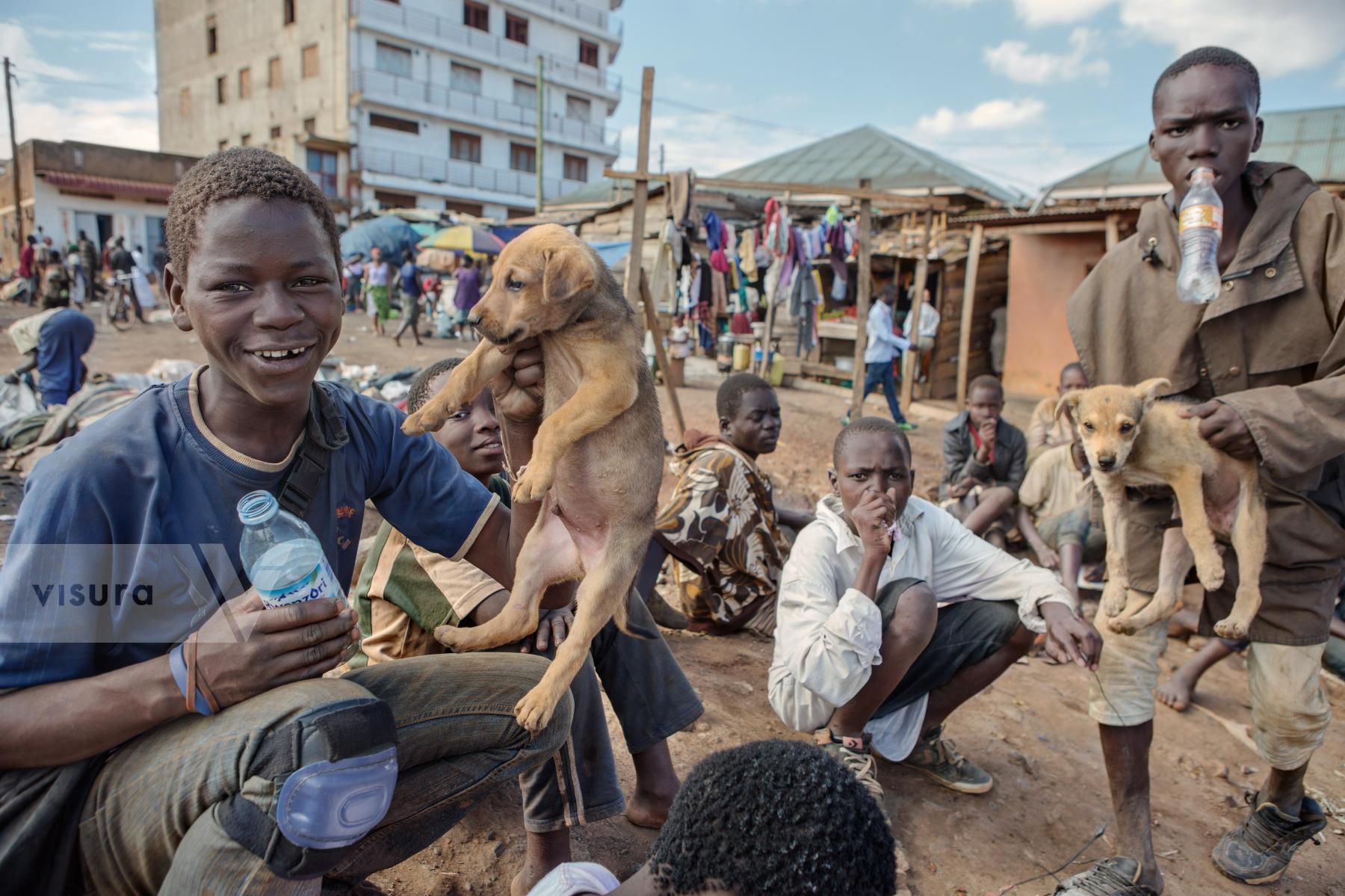
A group of street kids, who make a living by selling plastic and metal by weight, playing with their pets while inhaling kerosene. Childhood & Poverty. In Kampala, the capital of Uganda, children and youngsters often take refuge in drug and alcohol consumption to evade poverty. (2277) KAMPALA UGANDA
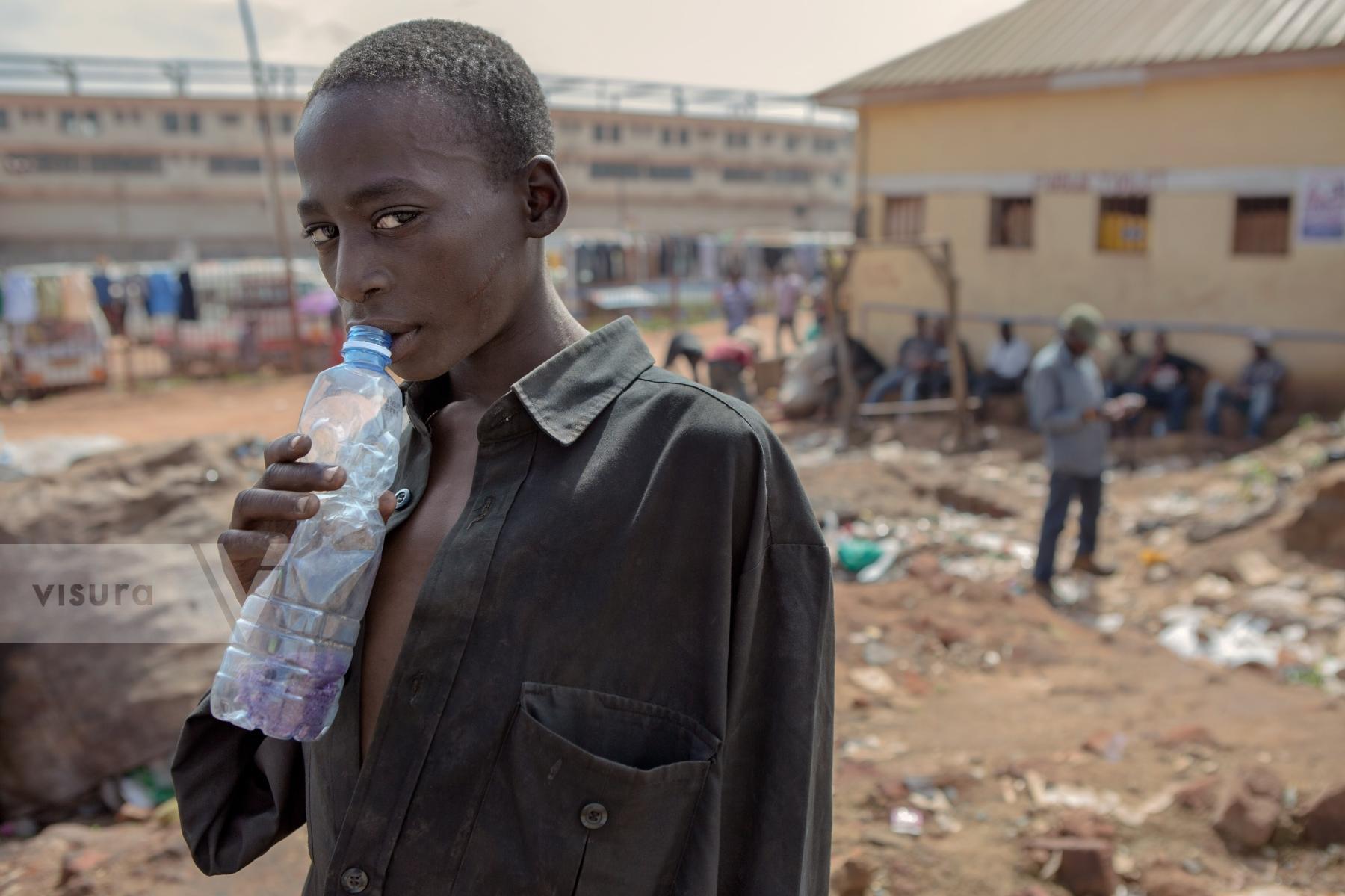
Street kid. Mukwasi Robert has lived in Kinsenyi since he was orphaned when floods devastated his village, Mbale, in 2010. Children in Uganda’s slums inhale drugs which can be bought legally: gasoline, kerosene and paint thinner. Not only are they cheap, they also help users to fight inhibitions, lose fear, steal or prostitute themselves. (2170) KAMPALA UGANDA
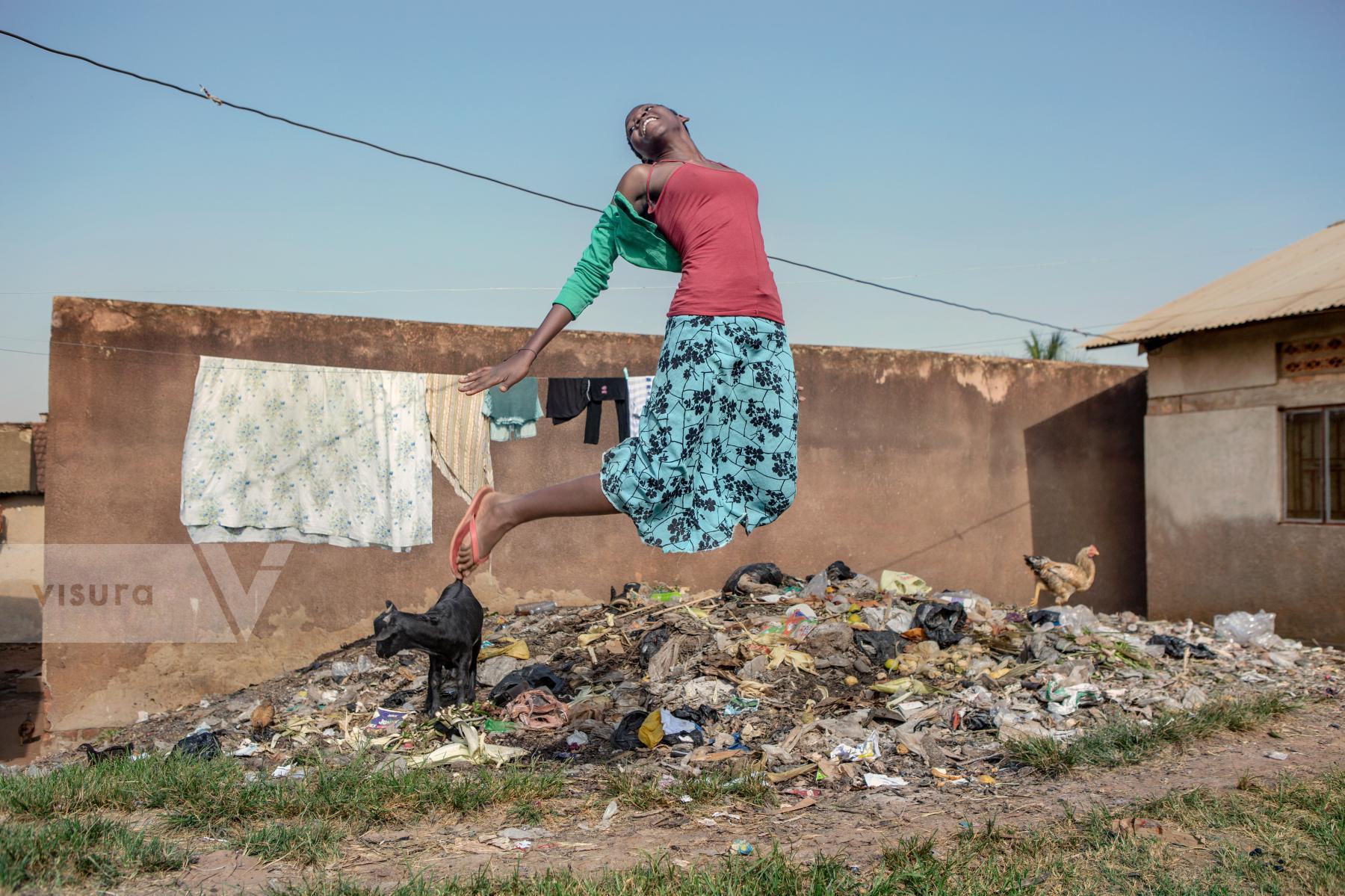
Mercy’s leap. SInce she is involved in artistic activities she says there has been a change within her, she questions social and political facts in her country and has more motivation to control her future. UGANDA
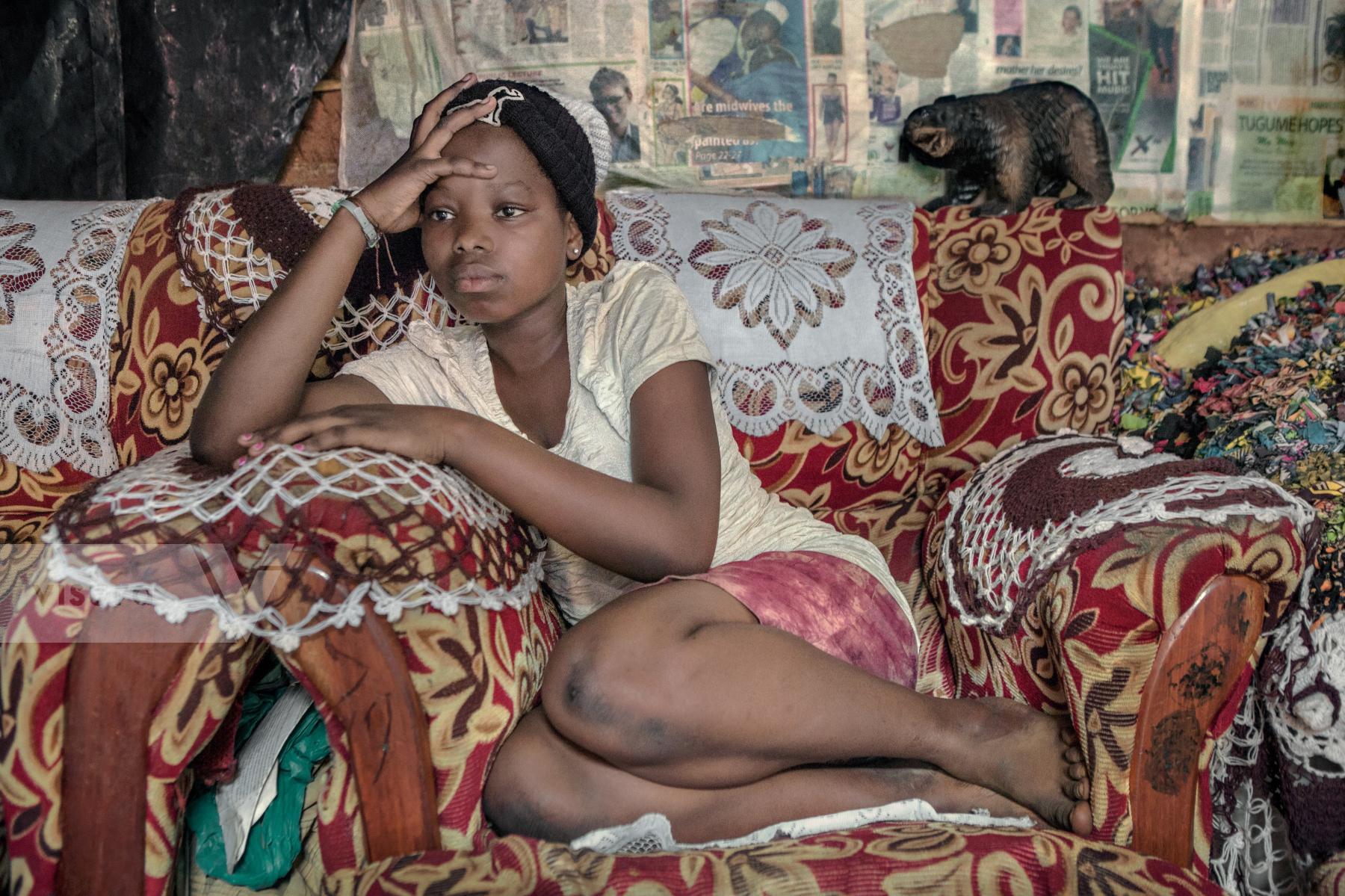
When daily life consists of struggling to survive, time and space for creativity is either scarce or non-existent. Zulaikah lives in Kibuli, a shanty town in Kampala that becomes extremely dangerous at nightfall. (3391) KAMPALA UGANDA
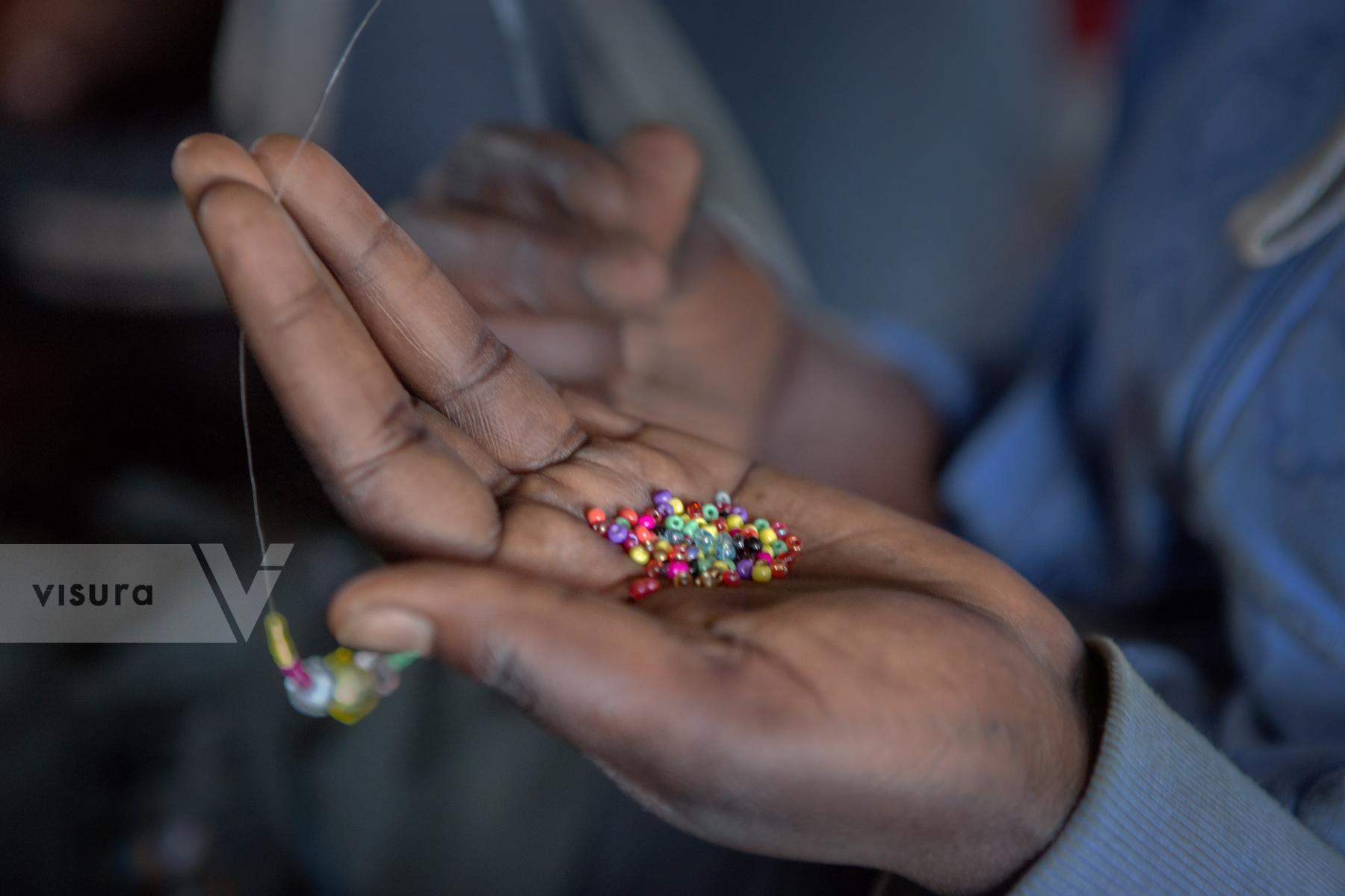
Painting T-shirts, designing bracelets, sketching… are not the goal, it is a way of developing creativity. This skill will help these kids to think for themselves and to face their future with a wider perspective. UGANDA
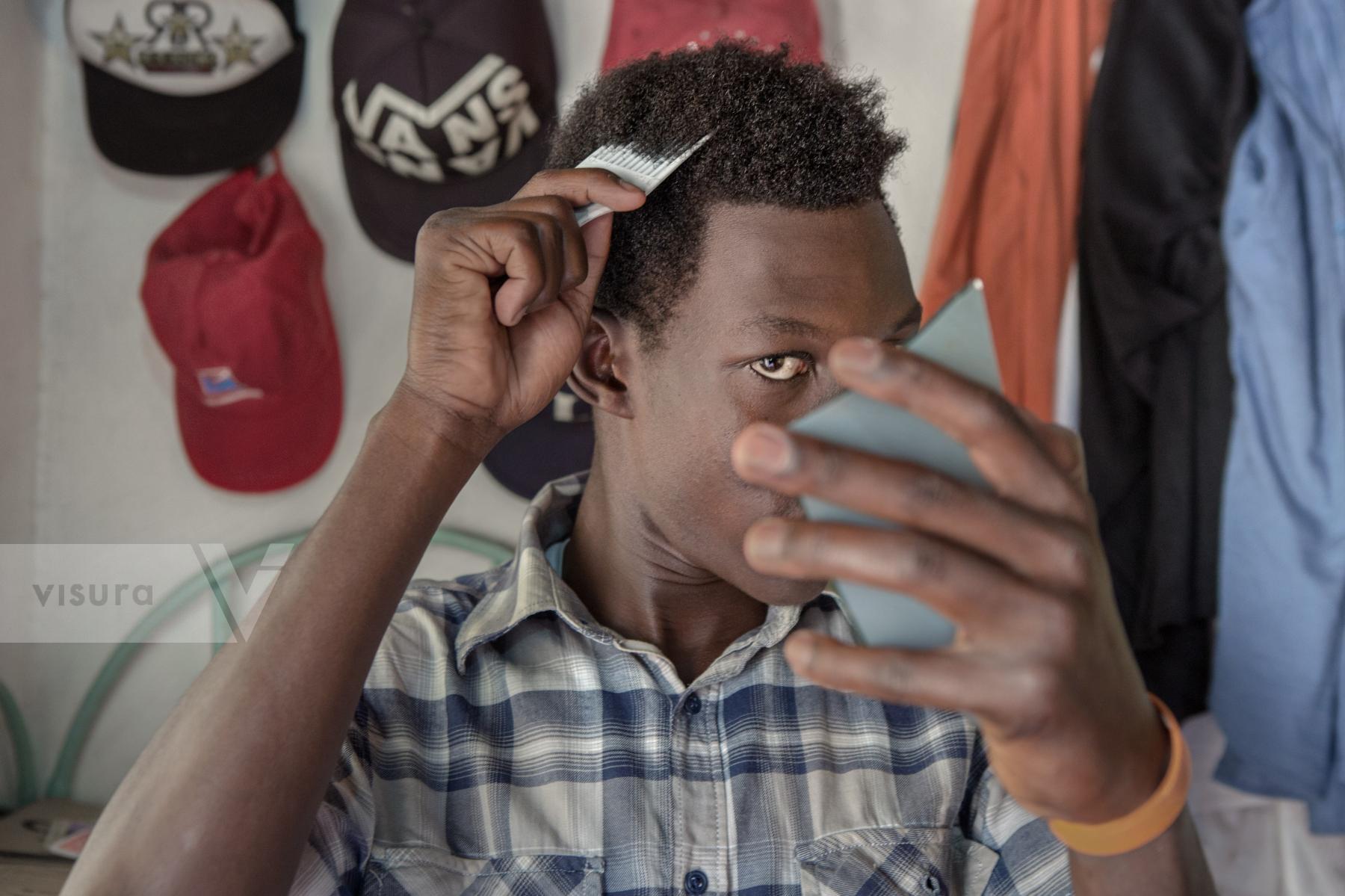
Ivan Musiime lives alone in the Kansanga ghetto in Kampala. He earned some money a couple of years ago, when he was chosen to perform in Poland and in France with other young people at risk of social exclusion, and this has enabled him to live on his own. KAMPALA UGANDA
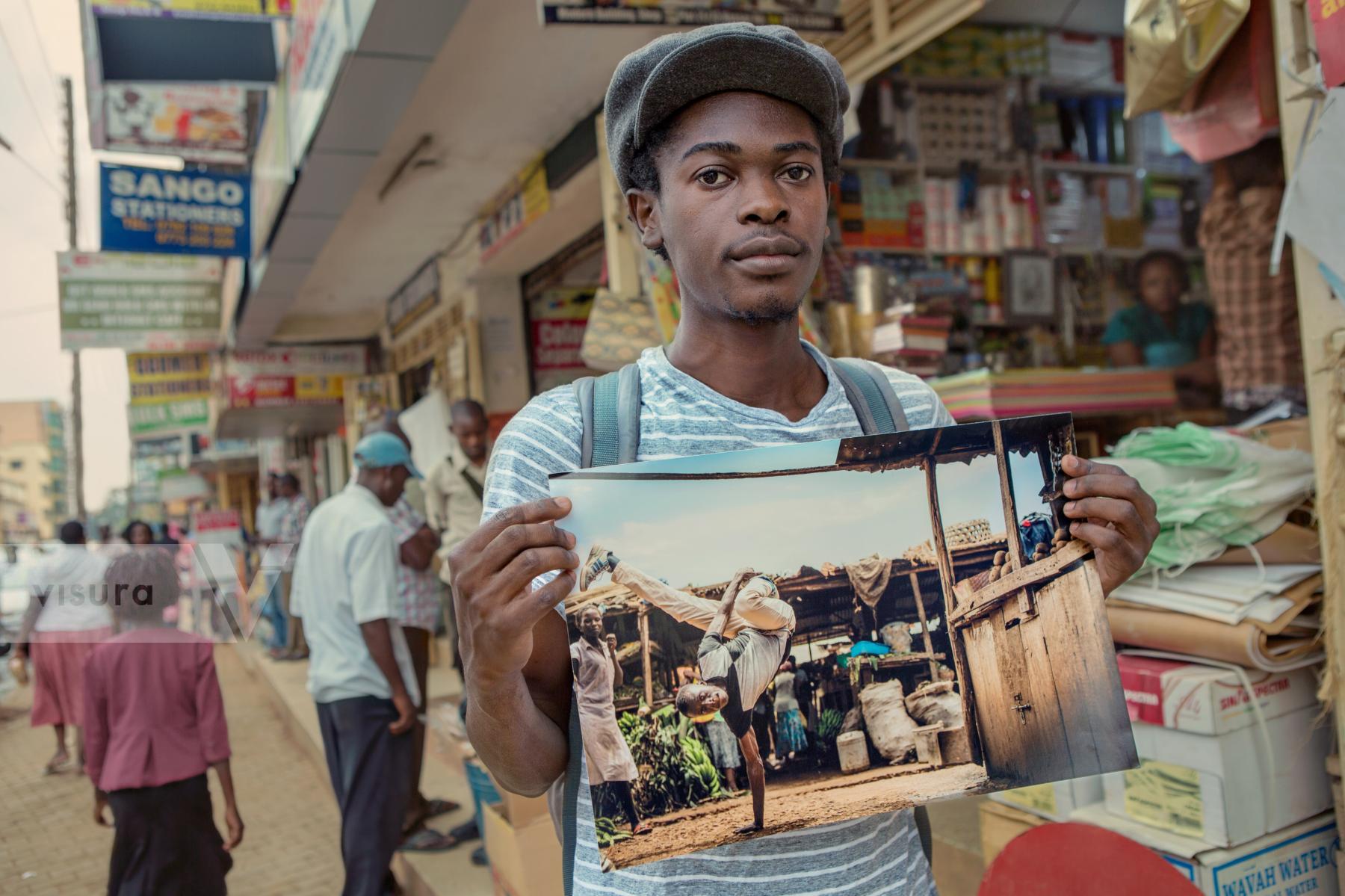
Kibuuka Mukisa Oscar photographs participants in the Breakfast Jam, a breakdance competition held every year in Kampala. His long-term project is to produce a book with photographs of breakdance performers in different African countries and show the various urban tribes that thrive on the African continent. (3493) KAMPALA UGANDA
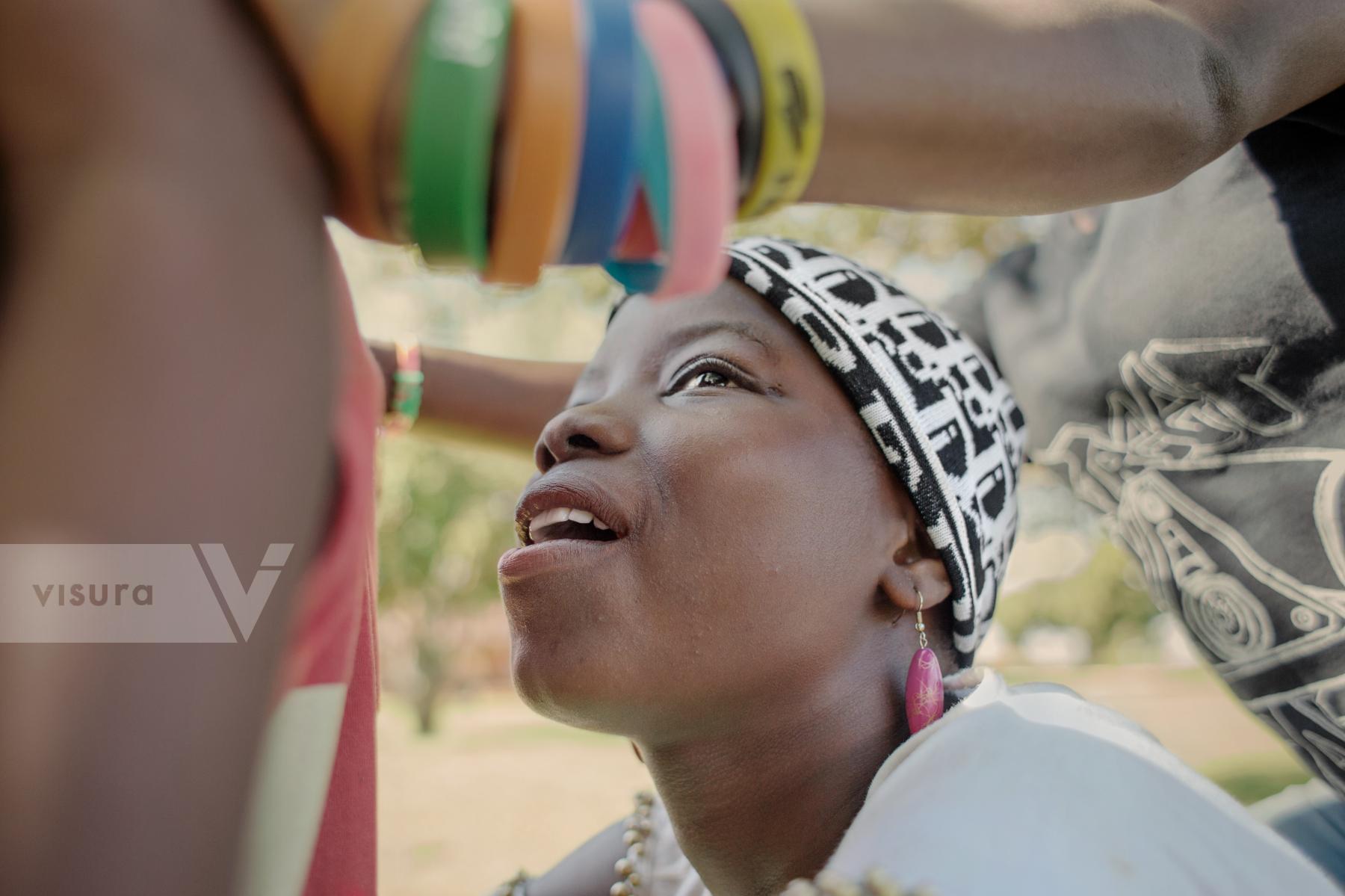
Zulaikah changed the way to face her life when she started attending to art classes at In Movement facilities in Kampala. She has now a positive attitude. She has built strength and developed creative tools to approach problems that come across her day to day life. UGANDA

The NGO, In Movement, provides arts education classes in painting, music, poetry, dance, graffiti, theatre, photography and, of course, circus. This helps youngsters’ self-confidence, keeps them stimulated and improves their self-esteem. UGANDA
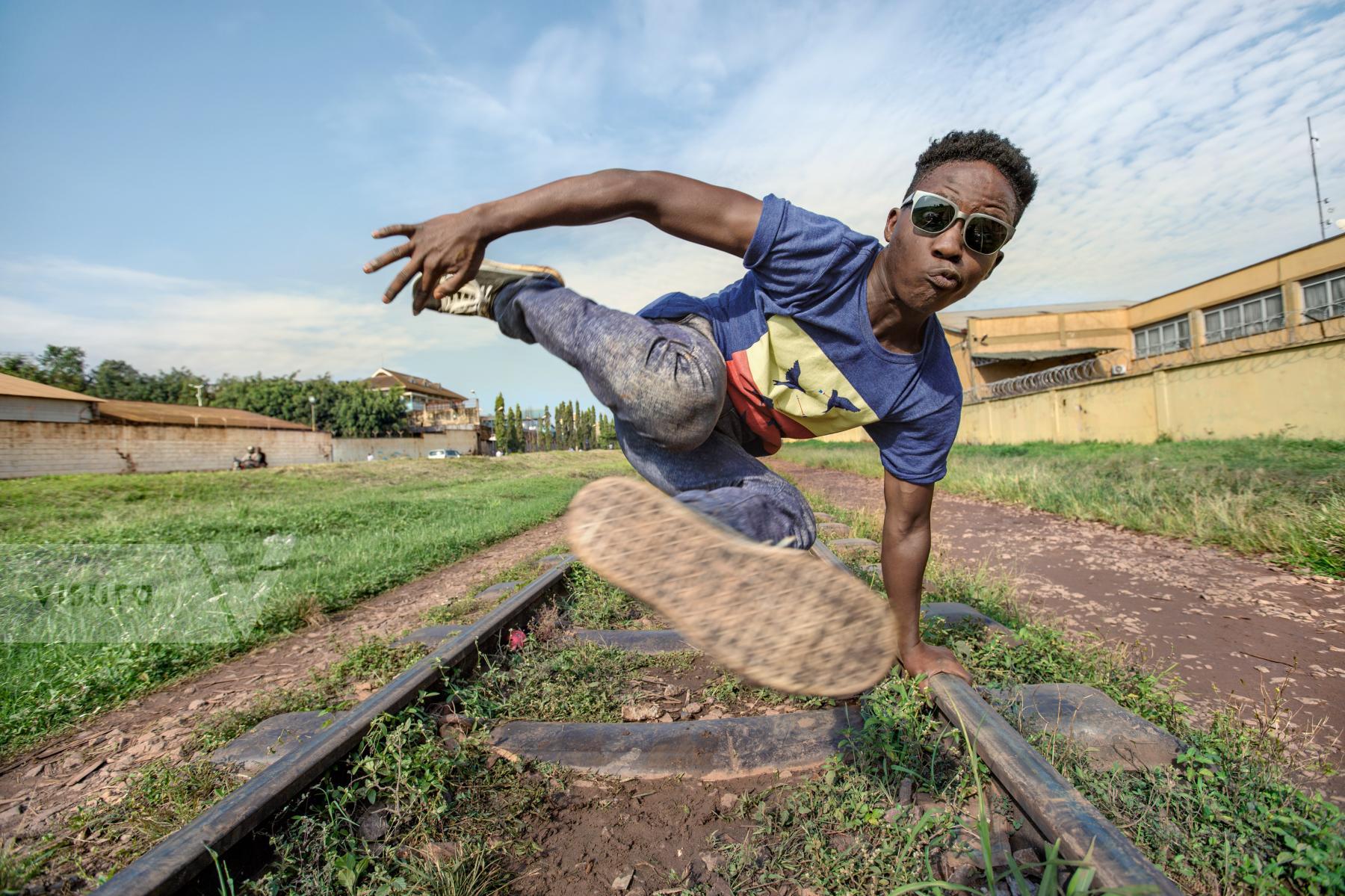
Eric’s leap. “In hip hop there’s a lot of respect, we train as a group and now my colleagues are my family. Working as a team is very inspiring”. Eric Egesa began doing breakdance at the age of 12. His parents could not afford school fees, but the small income he made from performing meant he could complete his studies. Today he is a dancer and dance teacher at the International School in Kampala. He also features in the documentary film Shake the Dust, directed by Adam Sjöberg, on the importance of dance as a universal form of expression. In September 2014 he travelled to the United States to attend the première of the documentary, a dream come true for him. UGANDA
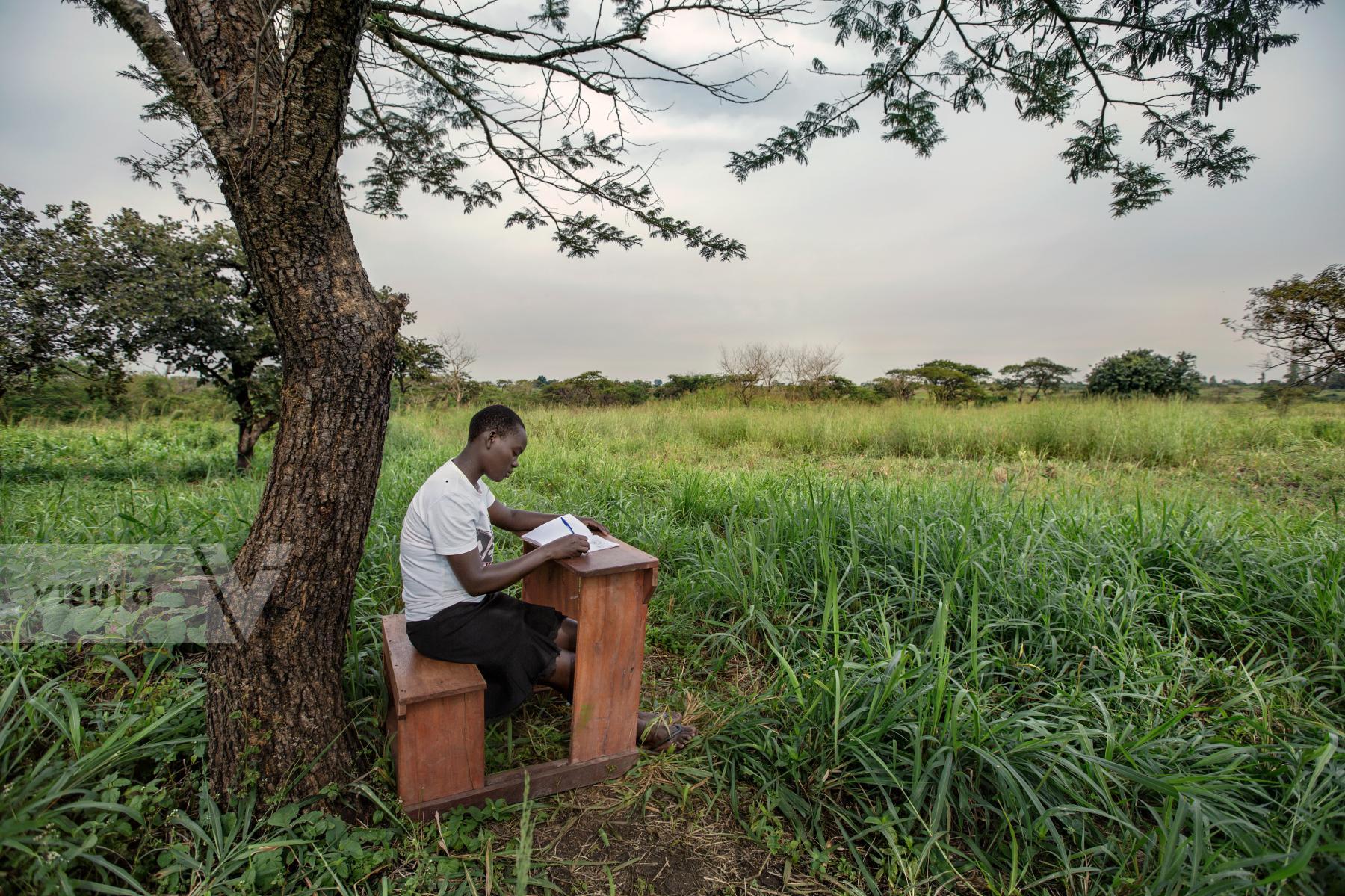
Name: Republic of Uganda Population: 37,101,745 people Capital: Kampala Population density: 152.27 inhabitants per km2 Life expectancy: 54.9 Infant mortality rate: 59.2 per thousand Human Development Index (HDI): ranked 164 out of 187 countries. Fertility rate: 5.9 children per woman. UGANDA
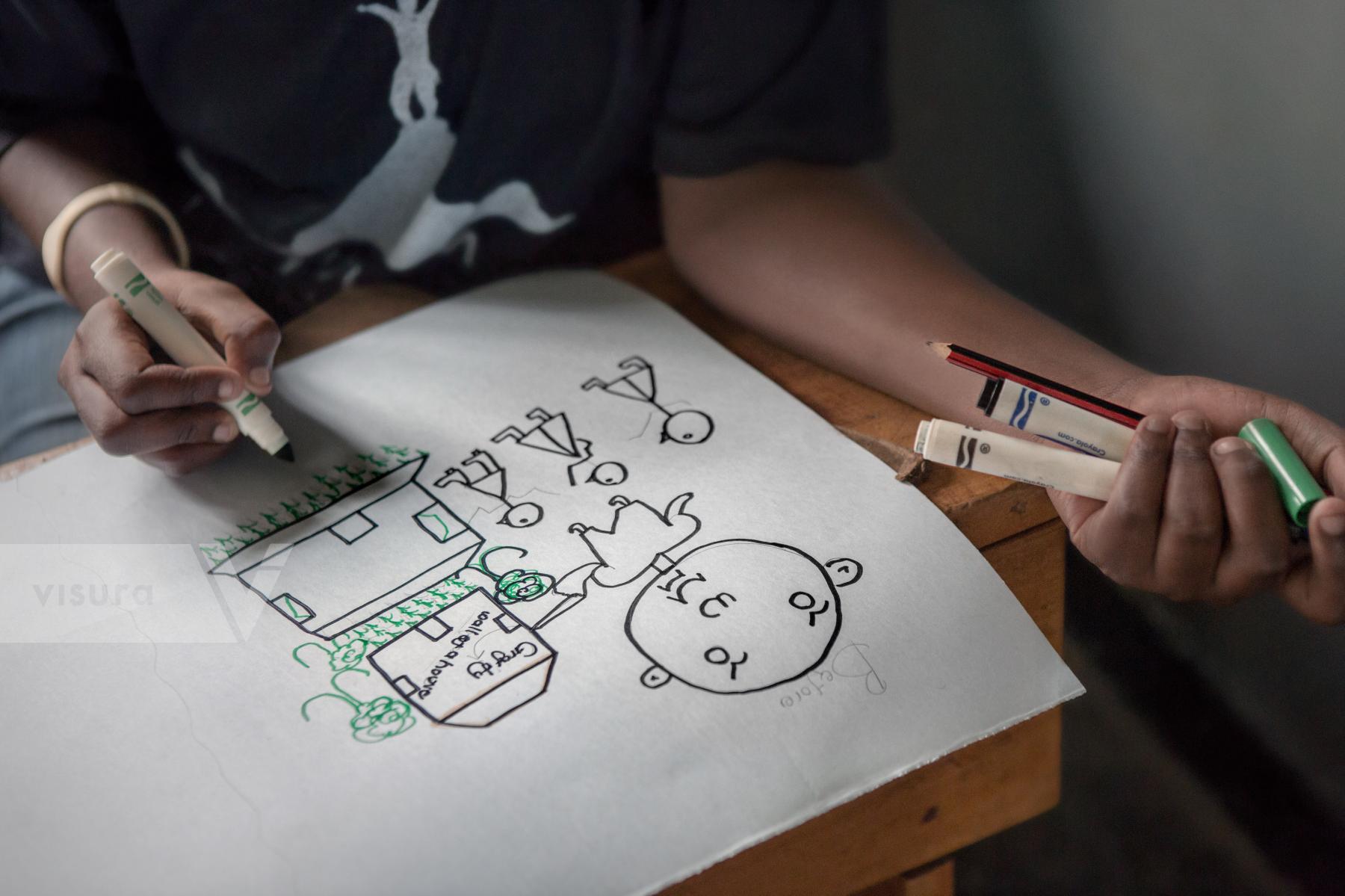
Art inspires, stimulates and satisfies: imaginative education is a great start for building a better society. UGANDA
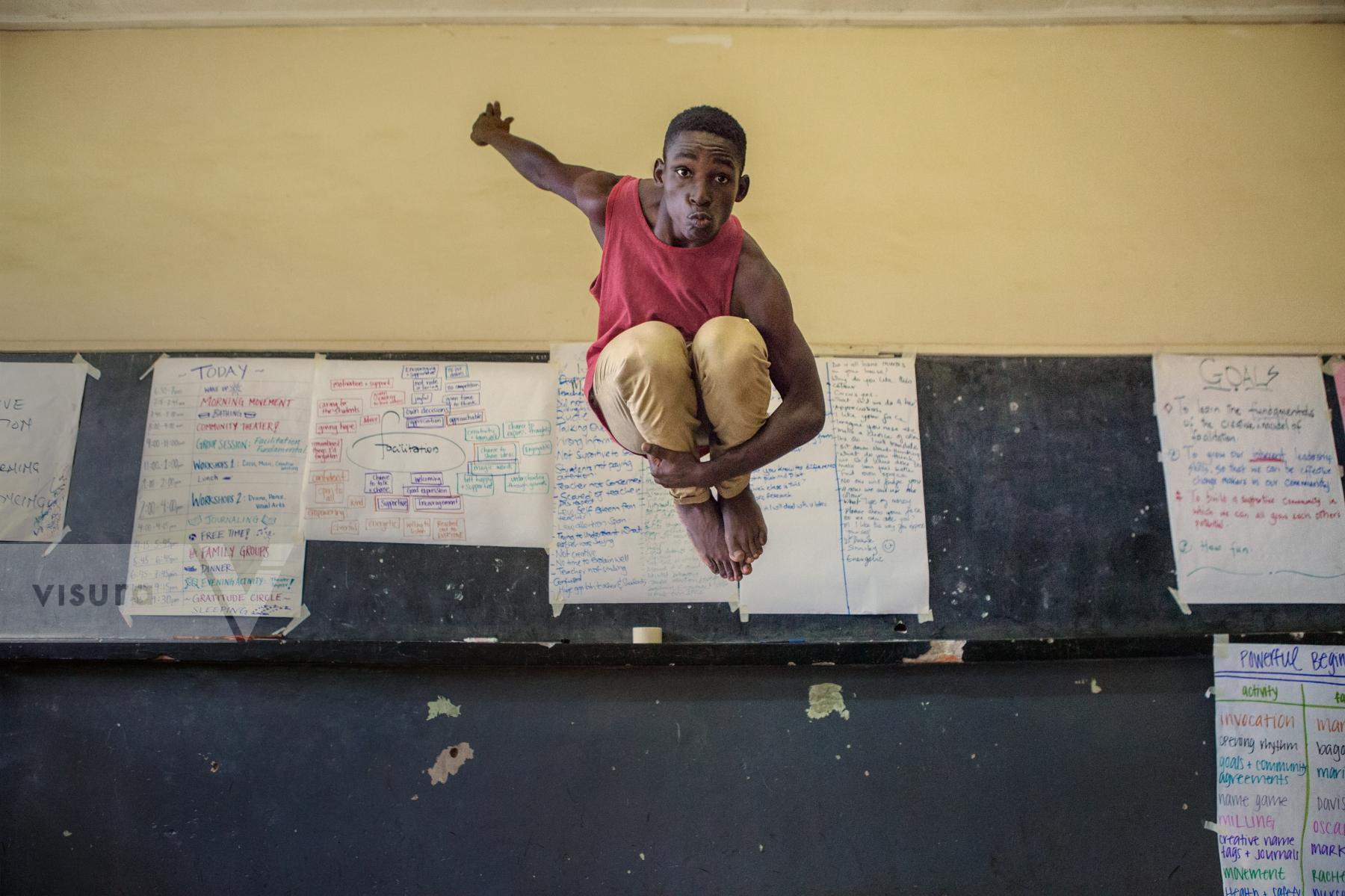
“The happiest moment of my life was when I started dancing and I realised I was good at it”. Hamis Zzy is 18 and lives in the Nsambya ghetto in Kampala. UGANDA
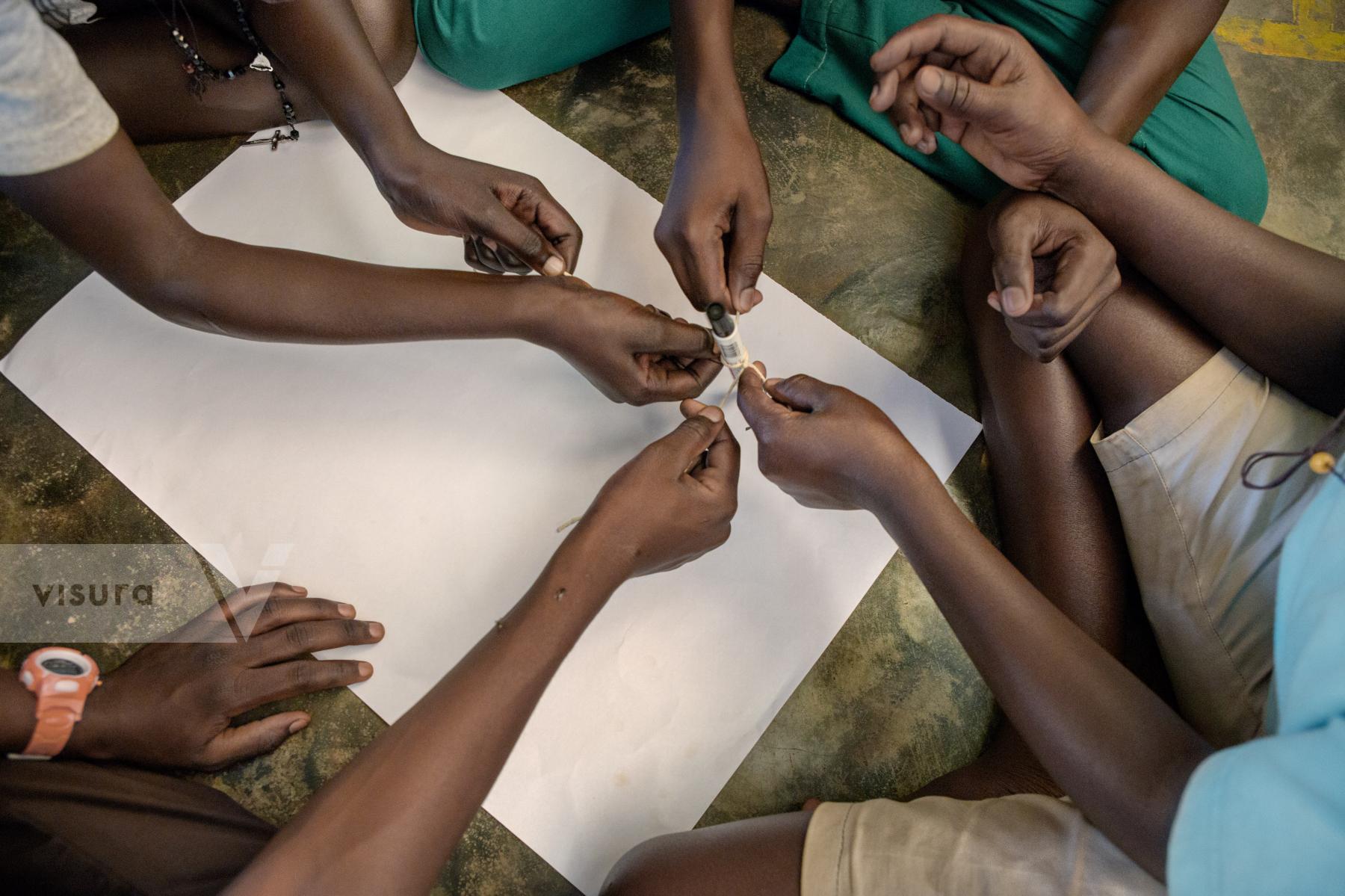
70% of the population is aged under 18. The highest percentage of Africa. UGANDA
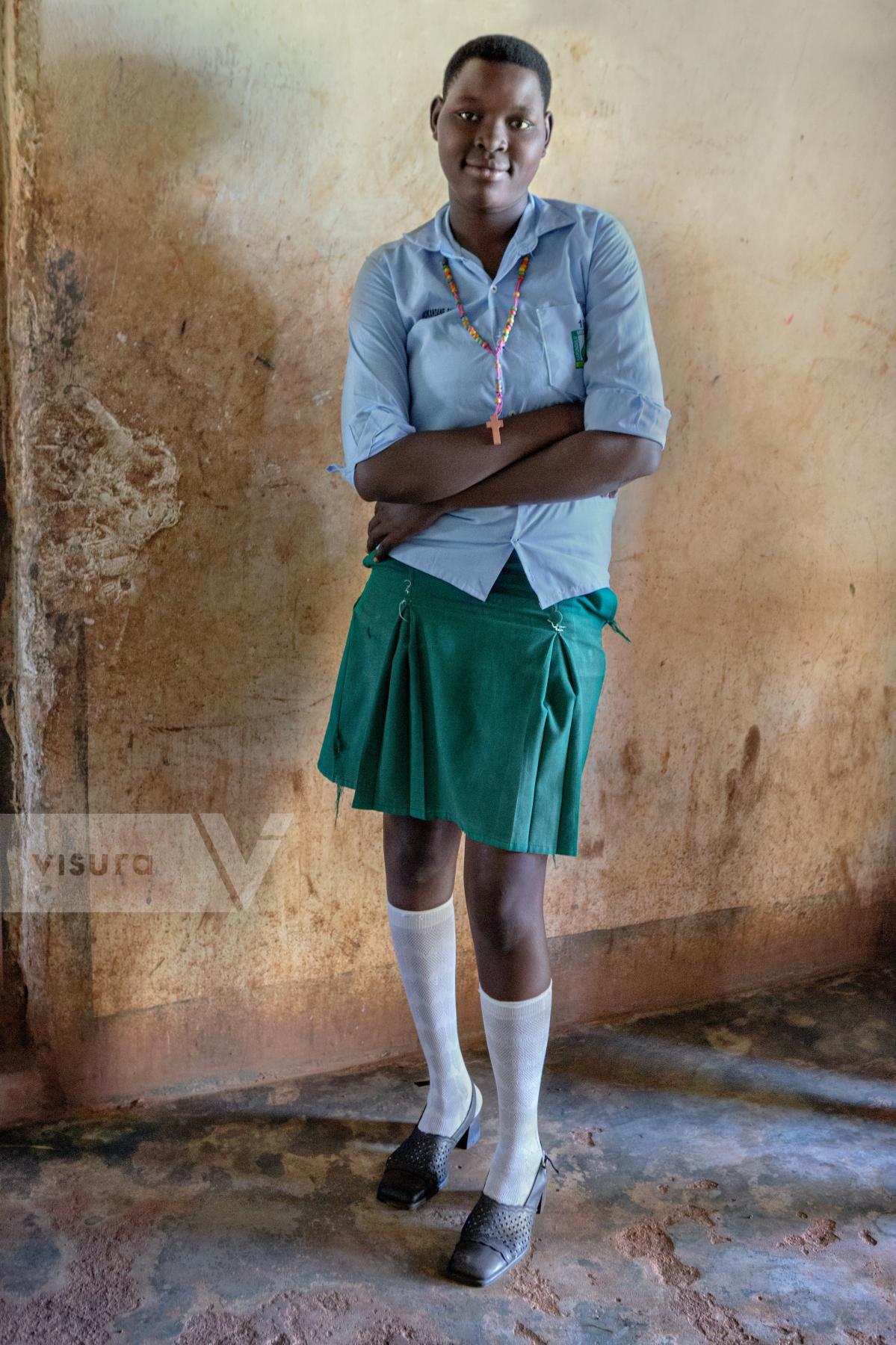
Amung Betty. A student who studies and lives in Hope North, 2014. She takes care of the kitchen needs, control the costs and manage small admistration duties. Students develope comunity work to help and keep their tuition fees low. UGANDA
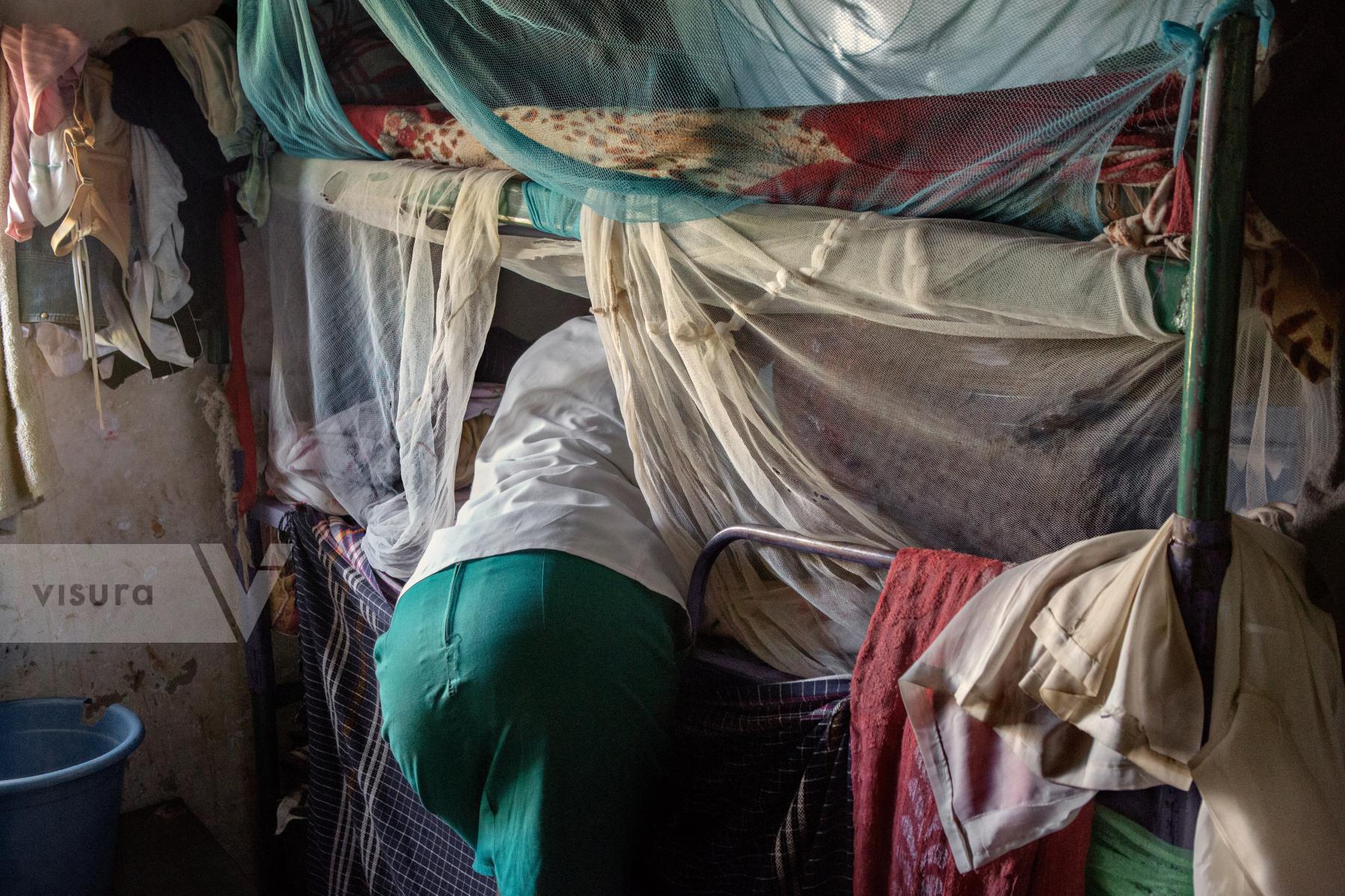
This centre (Hope North) is set on 16 hectares of land with a football pitch where everything from music workshops to painting classes are provided. It has an art school, a vocational training school and a farm school. UGANDA
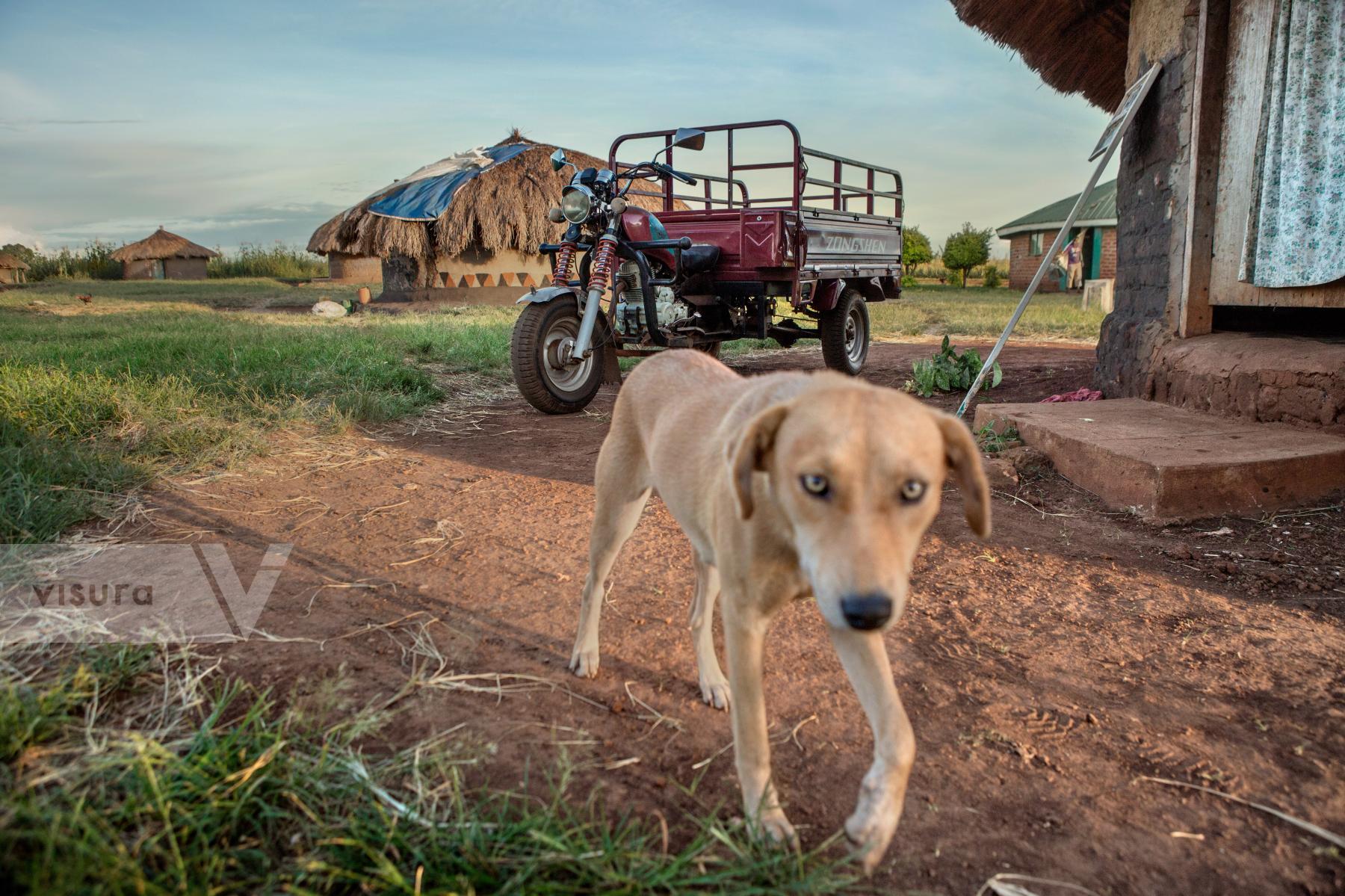
Hope North (Bweyale, northern Uganda) is a school set up in 1998 by Sam Okello and takes in child victims of the civil war, including orphans and child soldiers, equipping them with the skills to become spokespeople for peace and development. This centre hosts and encourages “art as a tool for social change” programs at its facilities. UGANDA



























